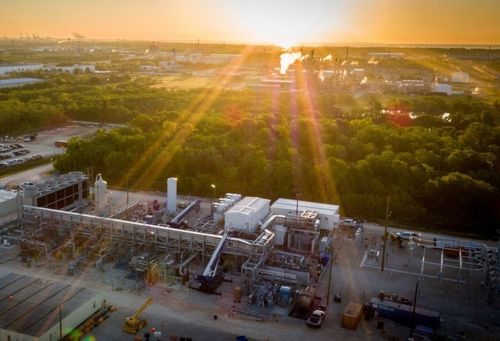PCC Hydrogen, which has proprietary technology for hydrogen production from ethanol, is making the case to the ethanol industry to seek out opportunities to convert ethanol into hydrogen instead of sustainable aviation fuel.
As it stands, very few ethanol producers will be able to qualify for the sustainable aviation fuel tax credit based on the requirements for climate-smart agricultural practices included in IRS guidance. But PCC’s ethanol-to-hydrogen production process would meet the carbon intensity threshold to qualify for the 45V clean hydrogen tax credit, Fogarty said.
“The ethanol industry seems to be battling with refiners, automakers, and customers to push higher percentages in gasoline,” Fogarty said in a presentation, noting furthermore that the market for ethanol in alcohol and chemical industries is relatively small. “And while sustainable aviation fuel is an exciting space, there are headwinds, especially with the most recently announced carbon standards required through the GREET model,” he said.
Fogarty argued that the PCC Hydrogen process resolves the chief impediments for widespread green hydrogen production: cost effectiveness, low carbon intensity, ease of distribution, and integration to existing ethanol infrastructure.
PCC can produce green hydrogen for $5.22 per kg, not including tax credits from 45V or RINs from the federal RFS program. That compares to $10.28 per kg from green hydrogen made with a connection to the U.S. power grid, and $19.76 per kg from the California grid.
When capturing CO2 from the production process, PCC can achieve a negative carbon intensity, Fogarty said. This would allow it to qualify for the full $3 per kg tax credit for hydrogen under 45V, which amounts to $1.50 per gallon of ethanol – or covering nearly the full cost of a gallon of ethanol.
“People do not understand that ethanol is in fact a very good hydrogen carrier,” he said. “I can get 2.5x more hydrogen by volume transported than if I was trying to transport liquid hydrogen itself,” and it doesn’t require cryogenic cooling.
Fogarty showed a slide with figures for hydrogen transport by volume where ethanol carries 178.3 kg of hydrogen per cubic meter, while liquid hydrogen only carries 70.8 kg of hydrogen per cubic meter. The slide additionally showed ammonia carrying 111.9 kg of hydrogen per cubic meter.
Indiana ecosystem
PCC has a pilot plant at a POET ethanol facility in Cloverdale, Indiana, with hydrogen offtake from Siox, LLC, according to Fogarty.
Additionally, PCC has partnerships with Cummins and Terex Corporation to trial concrete mixer trucks powered by Cummins’ hydrogen combustion engines at a neighboring location in Indiana. There are also nearby mining operations that Fogarty believes would migrate some of their capabilities to hydrogen.
“Our goal is to demonstrate this ecosystem of distributed hydrogen capabilities, and then grow those distribution points to other ecosystems” across the Midwest, the U.S., and eventually for export, he said.







